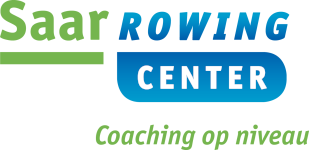Rowing for advanced rowers: single scull, double scull or pair
The coaching is aimed at improving the participant’s stroke as a whole, in order for them to row more effectively. Video-analysis is very helpful for this and will be used extensively throughout the course.
Because we work with individual coaching, both advanced and experienced rowers in the single scull (1x), double scull (2x) or pair (2-) can participate in the same course.
The single scull, the double scull or pair is one of the best boat types for advanced scullers and sweep rowers to improve their technique. The 1x, 2x or 2-, when rowed on a calm stretch of water, allows you to take the time you need and really focus on developing a better overall stroke. Step by step, you will get to grips with the essence of a good stroke.
What is the importance of relaxation? Why does the sequence of first legs, than body, then arms, matter? What should my hips be doing? Why does core stability matter? How far should I lean back? Should I really bend by back, or what do they mean by “rocking over”? are just a some of the questions we may discuss.
Every participant will have video recordings made during their morning outings, as most people’s idea of their own stroke does not (quite) match reality. After lunch, we will analyse these videos and take a closer look at your rowing. Your coach will then suggest drills and focus points for your afternoon outing, and help you to put these into practice once you are on the water.
With the right coaching, even an experienced rower in the 1x, 2x or 2- will be able to improve his or her technique, and hence their boat speed. There is often a specific part of the stroke that can be optimised, leading to a better, more effective execution of the following portions of the stroke. One example of this is learning to engage the upper body swing at the correct point of the leg drive. This will increase the effectiveness of the stroke and thus the speed of the boat. Another example would be learning to place the blades while still coming forward, and then engage the blades by driving with the legs early in the stroke, followed by a natural back swing. Yet another focus point might be adopting a strong body posture toward the end of the stroke and using this to achieve a dynamic hands-away and body rock, in that order. Even experienced scullers can often increase their boat speed when they adjust these points.
Both advanced and experienced rowers are video-recorded daily, with rower and coach watching the videos afterwards. The rower has an active part in analysing his or her own rowing and working out what part of the stroke could be, or should be, improved. And most importantly, working out what the cause is and how this affects the rest of the stroke.
The analysis of causes and effects is used to decide on the focus points and possible drills or exercises that may help. These will be put into practice during the afternoon outing, always with your coach at hand to provide feedback. A few days of concentrated hard work on your technique will result in a noticeably improved stroke, so that by the end of the course, you should be able to feel your rowing is (even) smoother than before. Smoother rowing enables you to row further and faster without spending more energy – which is of course just what you need in a race!
SRC runs courses for advanced or experienced rowers in singles (1x) , doubles (2x) or pair (2-) in Dreisbach, Berlin, Seneffe, Seville, Niffer, Oberschleissheim, Wohlensee, Apeldoorns Kanaal and in Dalfsen.
Prices
Our price list shows the prices of our advanced (A) and experienced (E) courses by location.
